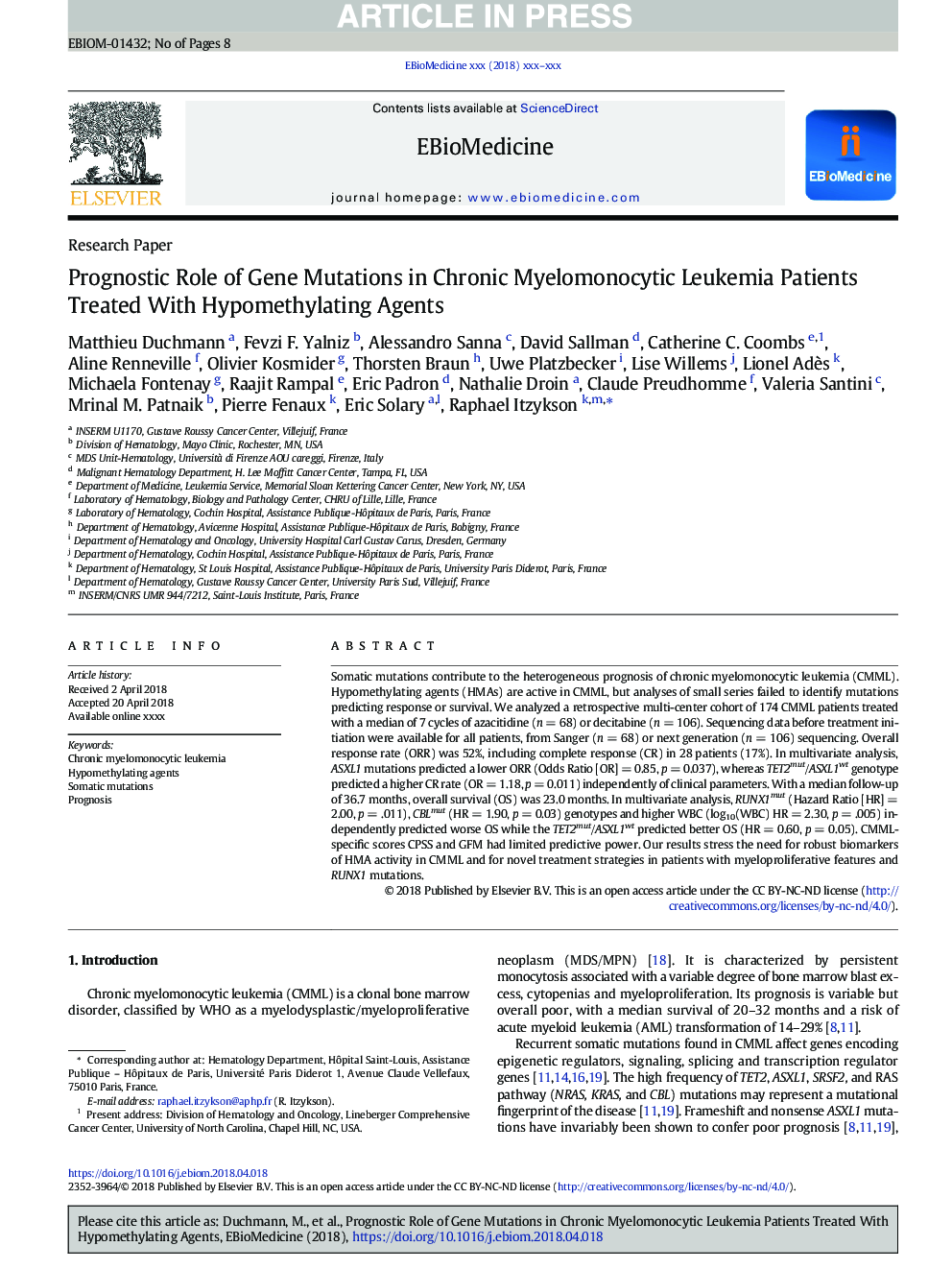| Article ID | Journal | Published Year | Pages | File Type |
|---|---|---|---|---|
| 8437297 | EBioMedicine | 2018 | 8 Pages |
Abstract
Somatic mutations contribute to the heterogeneous prognosis of chronic myelomonocytic leukemia (CMML). Hypomethylating agents (HMAs) are active in CMML, but analyses of small series failed to identify mutations predicting response or survival. We analyzed a retrospective multi-center cohort of 174 CMML patients treated with a median of 7â¯cycles of azacitidine (nâ¯=â¯68) or decitabine (nâ¯=â¯106). Sequencing data before treatment initiation were available for all patients, from Sanger (nâ¯=â¯68) or next generation (nâ¯=â¯106) sequencing. Overall response rate (ORR) was 52%, including complete response (CR) in 28 patients (17%). In multivariate analysis, ASXL1 mutations predicted a lower ORR (Odds Ratio [OR]â¯=â¯0.85, pâ¯=â¯0.037), whereas TET2mut/ASXL1wt genotype predicted a higher CR rate (ORâ¯=â¯1.18, pâ¯=â¯0.011) independently of clinical parameters. With a median follow-up of 36.7â¯months, overall survival (OS) was 23.0â¯months. In multivariate analysis, RUNX1mut (Hazard Ratio [HR]â¯=â¯2.00, pâ¯=â¯.011), CBLmut (HRâ¯=â¯1.90, pâ¯=â¯0.03) genotypes and higher WBC (log10(WBC) HRâ¯=â¯2.30, pâ¯=â¯.005) independently predicted worse OS while the TET2mut/ASXL1wt predicted better OS (HRâ¯=â¯0.60, pâ¯=â¯0.05). CMML-specific scores CPSS and GFM had limited predictive power. Our results stress the need for robust biomarkers of HMA activity in CMML and for novel treatment strategies in patients with myeloproliferative features and RUNX1 mutations.
Related Topics
Life Sciences
Biochemistry, Genetics and Molecular Biology
Cancer Research
Authors
Matthieu Duchmann, Fevzi F. Yalniz, Alessandro Sanna, David Sallman, Catherine C. Coombs, Aline Renneville, Olivier Kosmider, Thorsten Braun, Uwe Platzbecker, Lise Willems, Lionel Adès, Michaela Fontenay, Raajit Rampal, Eric Padron, Nathalie Droin,
